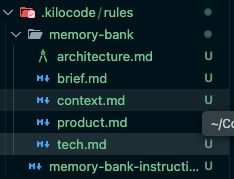IBM’s Quantum ‘Cat’ Roars: 120-Qubit Test Threatens Bitcoin’s Encryption
Key Takeaways
- The researchers from IBM have reported a new leap in quantum computing by achieving a stable 120-qubit entangled state.
- The Greenberger–Horne–Zeilinger (GHZ) state achieved has a fidelity of 0.56, making it the most stable quantum state reported to date.
- The quantum breakthrough is bringing the world closer to breaking BTC’s encryption in the future, but it’s not an immediate threat.
- The investors need to be aware of the long-term risks, such as quantum attacks, to minimize future risks.
The paper titled “Big cats: entanglement in 120 qubits and beyond,” authored by the researchers from IBM, has reported a new leap in quantum computing by achieving a stable 120-qubit entangled state. The experiment is a step forward in developing fault-free computers and breaking Bitcoin encryption one day.
The Greenberger–Horne–Zeilinger (GHZ) state, consisting of 120 superconducting qubits, achieved by IBM researchers, has a fidelity of 0.56, making it the most stable quantum state reported to date. In the GHZ state, or popularly called ‘cat state’, the qubits can exist in multiple states, unlike a traditional system where only either ‘0’ or ‘1’ is possible at a time. Creating and maintaining this fragile state is a herculean task, as it is extremely vulnerable to even minuscule disturbances, such as a slight temperature difference.
According to the researchers, the benchmark for the quality of a quantum computer depends on the ability to faithfully entangle and the Greenberger–Horne–Zeilinger (GHZ) states, which the study focused on, are easy to verify, but difficult to prepare due to their high sensitivity to noise. The research paper further notes that they sought to create a large entangled resource state on a quantum computer using a circuit whose noise was suppressed. They used techniques from graph theory, stabilizer groups, and circuit uncomputation to achieve that goal.
The research team successfully confirmed the existence of the state with a fidelity crossing the 0.5 and reaching 0.56. The fidelity of 0.5 is the threshold needed to confirm full quantum entanglement. The fidelity is a measure used to quantify how close the practical state achieved is to what is theoretically possible. The researchers are striving to achieve a fidelity value of 1, which will lead to the creation of complex fault-free computers that can perform massive and complex computations in less time.
Bitcoin’s ‘Q-Day’: How Close Is the Quantum Encryption Threat?
Although the current GHZ state achieved by the researchers sets a new benchmark and is bringing the world closer to breaking BTC’s encryption in the future, it’s not an immediate threat.
Bitcoin’s cryptography is built upon two powerful cryptographic systems called the Elliptic Curve Digital Signature Algorithm (ECDSA) and the SHA-256 hash function. The quantum computers that could break the advanced encryption of the BTC are yet to be developed. Nonetheless, the predictions for achieving the required quantum computing ability range from 2 years to decades.
Why Investors Should Be Aware of the Latest Quantum Developments?
The Etherium co-founder Vitalik Buterin has earlier warned that there’s a 20% chance that quantum computers could break current cryptographic systems by 2030.
Even before the achievement of the required quantum computing abilities to break Bitcoin’s encryption, “ Harvest Now, Decrypt Later” risks are raising concerns in the crypto landscape; these are the type of attacks where the attackers gather the relevant encrypted data and store it so that they can break it later when quantum computing advances. Besides, according to Deloitte, 25% of the Bitcoins in circulation are at risk of a quantum attack even now. The older wallets, such Sathoshi era, remain more vulnerable to quantum threats.
The larger cryptocommunity is aware of the risks that quantum developments could pose in the future. The developers are actively engaged in researching and developing post-quantum cryptography (PQC) to counter the threats. Nevertheless, the investors need to be aware of long-term risks such as quantum computing, so that they can place guardrails in time.
The post IBM’s Quantum ‘Cat’ Roars: 120-Qubit Test Threatens Bitcoin’s Encryption appeared first on BiteMyCoin.
You May Also Like

Aster adjusts S3 buyback and airdrop mechanism: 50% buyback and destruction, 50% return and lock airdrop address.

XRP Price: First U.S. ETF Goes Live Thursday as Bulls Eye Breakout Above $3
